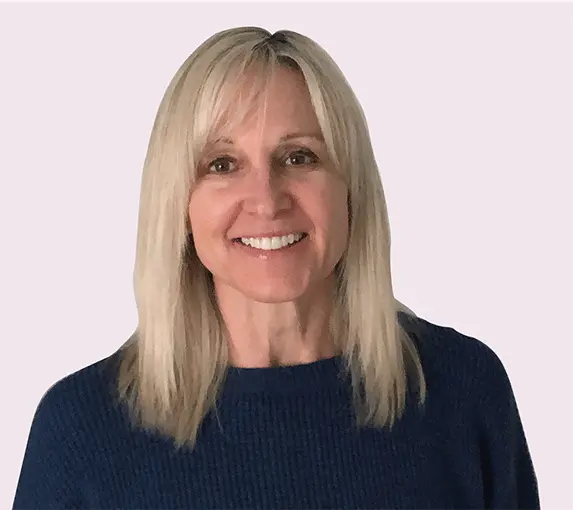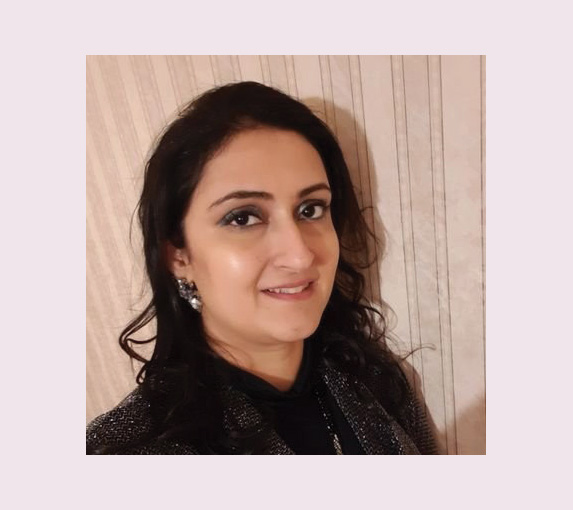
Episode 118: The impact of Lesson Structure
Productive struggle, An algebraic expert, and more. In this episode, Adam and Robin are joined by guest Sana Malik, a Year 5 Teacher and Maths Lead from St Mary’s Primary School in Manchester, UK. What is the process like of delivering the initial problem to the class? Any tips for how journaling is structured? Plus, Sana shares a story that highlights the importance of being able to explain your thinking and understanding.
More Podcasts on Education
Continue listening to our educational experts
Meet your instructors
The school of school podcast is presented by:

Andy Psarianos
@andy_psarianos

Adam Gifford

Robin Potter
Special guest instructor

Sana Malik
Never miss an episode
Subscribe to get the latest The School of School podcasts delivered to your inbox.
Podcast Transcription
Andy Psarianos
Hi. I'm Andy Psarianos.
Robin Potter
Hi. I'm Robin Potter.
Adam Gifford
Hi. I'm Adam Gifford.
Andy Psarianos
This is the School of School Podcast.
Welcome to the School of School Podcast.
Robin Potter
Are you a math teacher looking for CPD to strengthen your skills? Maths — No Problem! has a variety of courses to suit your needs. From textbook implementation to the essentials of teaching maths mastery, visit mathsnoproblem.com today to learn more.
Adam Gifford
Welcome back. It's another School of School Podcast. Now half the usual gang's not here, but Robin, you are here. How are you Robin?
Robin Potter
I am. I'm great, Adam.
Adam Gifford
Good. And to make up for the fact... in fact, more than make up for the fact that Andy's not with us today, we've got Sana Malik from a school that's very dear to my heart, from St. Mary's Moss Side Manchester. Sana, welcome to the podcast. Can you tell our listeners a little bit about yourself?
Sana Malik
Yeah. My name is Sana and I'm from St. Mary's Primary School. I'm a year five teacher there and I'm also the maths lead and it has been nine years I've been teaching in St. Mary's Primary School.
Adam Gifford
That's quite a decent chunk of time. And I know one of the things that you've looked at, I'm very fortunate, I've probably visited St. Mary's lots and lots of times over. Well, lots of years now. So I've seen bits and pieces of it, but not firsthand as often as you. What we want to talk about today is lesson structure and the impact that that can have. Maybe some top tips and some things around lesson structure that can help ensure that our children are learning as well as possible. So I'm going to hand over to you Sana and I'm all ears.
Sana Malik
Yeah. So talking about the lesson structure, of course, I mean I'm lucky enough to actually start teaching. When I started teaching in St. Mary's Primary School, we started with Maths — No Problem! And the lesson structure is very consistent and same across the whole school. Now because it's been so many years that children are doing and following the same structure, you can see that it is really helpful for teachers and children for following it properly and it makes a massive difference in their engagement in the lesson. So I'm just going to talk about how the lesson flows.
So we start the lesson of course with the problem and introduce the problem in very slow steps. Very slowly we introduce the problem to make sure that everyone understands what the problem is and at that point we make connections with their prior learning, what they've learned before in the previous lesson or lessons or even before, if not from this week, last term or anything that we have learned. So do you know anything that can help you to solve this problem? Do we understand the problem? Do we understand what this is? And the problems that we of course have on a daily basis is very real life to them. So making sure that they understand what that is.
Once they understand what the problem is, they actually go and then explore the problem with their peers. And we are in a school of course, we follow the mastery approach to all the children. They're sitting with mixed attainments. So they go back to their tables and they then solve the problem. They explore what the problem is and at that time the teacher's role is to just observe, which can be challenging as a teacher when you see a child is struggling and you just jump in and just want to help. But it's very important at that time that for the teachers just to be observing, let the children struggle, let them see, make those connections, look at each other, look at their peers, their partner, their group.
And that's a very good and a very important time for teachers to make their observations to see what the children are doing, what methods they're using. Of course, before the lesson starts, teachers make sure that all the manipulatives, all the concrete resources that you think the children might need to solve the problems are on their tables ready. So they go and they solve their problems with their friends, their partners, teachers. And if you have an extra adult in the class, you walk around, make sure that you're looking at all the things children are doing, what are their approaches, what models they're using, what pictures they're making. If there's any misconception, it is a time for you to do your formative assessment as well. Are they going in the right direction as well? Do they understand what they're doing? And at that time, of course what happens after that depends on what you see in the lesson.
So majority of the time when you see that and when you have given them enough time to explore, see, make connections, then it is followed then by structured discussions, then you bring them back in the front of the class on the carpet. And then we teacher, then facilitate the process of structured discussions. That's the time where the teacher's part come in. Now before we do that, because we also have the cooperative learning standards in our school, which is like helping and encouraging, that we talk to your partner. So we always make sure that at that time and they've explored, we make sure that children are talking to each other as well. And if you just see that's not happening, which luckily is never... not never, doesn't happen majority of the time. But if you see that they're all doing the task, then you can say, "Can the partner A tell partner B what you have done? And then can partner B show partner A?"
So this way you make sure that everybody gets the chance to speak because if you just say, "Can you tell your partner," you sometimes see that only one person takes over and explain who is confident. And you see those learners who are not actively participating or still struggling will actually not speak. But when you say partner E, partner B, partner A, B, then you give them a chance to speak to each other as a whole class. Then of course when you do the structured discussions, that's when the teachers then see, "Okay, this is what your partner did, this is what child A did, this is what child B did." And then you get that child involved when you are showing, "Why did you do this? Can you see what that is?" And of course make those pictures, provide them those models that you've seen in the class.
Now this goes of course beyond their groups now. It comes to the whole class. "This was happening in that team. Did you do similar things? Can you see any similarities, any differences? Can you see any connection between your method?" Because they have their whiteboards in front of them so they can see, "Yes, I understand that," or if they want to ask a question to that child who used that approach. And of course I have not mentioned this, that what I've noticed in the lesson, you always tend to get the method, which was the main focus for the lesson. You get it from a child. So when you then unpick and you bring it on as a, "I saw child A doing it," you see that if it comes from a child, another child will make that connection very quickly rather than coming from a teacher that, "This is the method I want you to use."
It's like, "Your friend was doing that, your friend B was doing that. Can you just have a look and compare with your?" So you are naturally showing them those methods which is coming from their peers and they make more connections because they see that if he or she can do it, I can do it too. So that collaborative and child-centred approach really facilitate the process of everyone making the progress in the lesson. So once you've done the structured discussion, we then get the children to do... the next part is journaling, which is also one of the parts of the lesson. Now teachers don't... we leave it to the teachers to decide. They don't have to journal every lesson, but I have noticed that our children love doing journaling because that's their chance to then show off what have they learned. So we say to them that, "Say your method to... explain your method and maybe choose another one that you've seen in class with your friends. That you want to explain as well?"
Robin Potter
I can actually visualise everything that you're talking about. So thank you for doing that. And I'm sorry to cut in. I love the whole description of how you go about doing the lesson planning, but the first thing you said was we introduce the problem very, very slowly. So that had me thinking of... and as you were describing how the children were doing this and working together, I thought, so how long usually when you say you're introducing it very slowly, are you talking one classroom session? Are you talking a week? Are you talking... does it depend because of how... if the children are understanding it? Are you guided by the children?
Sana Malik
So you're talking about just the first part of the lesson when they get the problem, the task that-
Robin Potter
They get the problem. How long do you focus on that particular problem?
Sana Malik
So one problem, the whole lesson starts from a problem. When you introduce the problem to them, what I meant was like, because it's like a word problem, it's like a real life scenario, if you show them the whole problem straight away, their understanding is not... they don't really understand exactly sometimes. They just tend to see the numbers and they get a bit lost. What I meant was showing them bit at a time. Let's think about what's going on. This is a shop. Can you picture the shop? This shop is selling pencils. Can you imagine a shop with the pencils? And then let's... okay, now it's been packed in these many packets. Can you now imagine all of that going in packs? So what I meant was that if you just show the whole problem straight away on the board like, "Can you read the problem," I feel it's more powerful to introduce it in slower steps.
So make sure they understand each step. And sometimes what I do is I hide the numbers which is required for them to solve the problems. And I say, "Okay, what do you think the problem can be?" I don't even show them the question, show them the scenario that's given. "What do you think the question can be?" And I absolutely love when they say, "Oh, they might ask us to now find out how many altogether, or they might ask us if one box was given to so-and-so, how much will be left? How many more would we need to make it that?" So you'll see loads of questions that they will come up with, which is again, another creative thinking that you are getting them to think of. And then you introduce, "Oh, okay, that's what you said. Well done. That actually is the problem."
So it's very slowly introducing the problem so they understand exactly what the problem is and what could it had been if it was not that. So that's what I meant when I was saying very, very slowly revealing the problem. And then when I said I sometime hide the numbers as like, "Okay, now the question is can you find this? Do you have enough information for you to solve it?" And then hopefully someone will say, "No, but we need to know this to find that. We need to know how many in one box to find out how many in five boxes." So then, okay, then you reveal that number. "If I tell you this now, you think this can help." So this way it's making those connections on the carpet before they actually go and explore it.
Adam Gifford
Another part that I'm interested in with the structure because you've really detailed the outline of the structure and what you're looking for and those sorts of things is... and I don't know how long you've been teaching for, Sana, so perhaps this is the only way that you've known, but I just wonder if you've seen the approach change from the very first time that you... I don't know, for most of us, the journey to becoming a teacher starts when you first decide, "Right. I'm going to be a teacher," and you very first start training. And for a lot of us, that's the first time we go back into school since we've left them. So I just wonder how is it different to, or is it different to your approach that you took when you very first started training, whenever that may be?
Sana Malik
Yeah, I must say that again. As I said, I'm lucky that I started teaching with Maths — No Problem! approach. And I absolutely love it. But yes, I have been to different schools as a student teacher. But when I started teaching, I was a supply teacher for two, three months when I was going to different schools and of course my journey as a student myself when I was taught, I feel this approach is so effective. And the key thing here is the two key points I'd say that I have been doing since I've started teaching this is that one, that it's not just told by a teacher. So you don't say, "Okay, I'm going to teach you a method today. You're going to use this to solve this problem. So this is column multiplication, this is how you do it, and I want you to do this now, apply to this problem."
Secondly, that's one thing, you're just not telling... in a way, teacher is telling by their help, by their support, "You've done it. This is what your friend has done. This has helped them to solve this problem. Can you see?" So it's coming from them. That's one definitely for sure. And secondly, mixed abilities. Schools, you tend to have that, this is a higher group and I still see it because I have been to many schools and you see like, "Okay, this is a higher ability, high attaining group. So they can have these questions. This is our lower ability group, lower attaining group, and they can have the easier ones." So I think by doing that, you are not helping them. You're not giving them the experience that everybody needs to progress. And I feel this is so effective for children with all attainment levels, wherever they're coming from, they're all together, they're listening to all their ideas and they know, "Yes, my method is different, but that is also different. She's also doing a different way, we all are doing different ways maybe, but our answer is the same. So now look at what's efficient."
So you look at many different ways you're making those connections, which I think was not the case then I was definitely taught. I was told that, "These are the matters I want you to use." So I didn't really explore different ways and encouraged to make pictures using concrete. So this structure, this scheme of work just naturally gives you all these fantastic opportunities like the CPA approach that we want to use, it just facilitate that process really well.
Adam Gifford
How do you convince people that aren't sold in it? I think one of the arguments that I hear when... if you're listening to people that maybe take a very different approach where it's far more of, as you've described, the teacher being the fount of all knowledge, and I'll just impart my knowledge on you and you'll be okay. And whenever... there's always what I've found a similar argument that comes back when you go, "Well, have you contemplated that this approach or a different approach or something like that?" And the answer that I get back a lot is, "Well, it worked for me. So the teacher being the fount of all knowledge, it worked for me. And look where I am now. I'm a teacher or I'm a this or I'm a that." So how do you convince and should we be convincing people to sit up and listen to this approach that you've outlined?
Sana Malik
I think I'm a perfect example for this actually. Because when I became a teacher, when I was training to be a teacher, remember going to one of the interviews that they gave me a problem and at that time I could actually solve any problem you could give me using algebra. I was really good in maths. I am good in maths. But I was not very good in explaining and I actually did not... I was not successful in that interview because the panel sitting asked me questions like, "Can you explain why did you do that?" And then that is a perfect example of the children who are high attainers in my class. You see so many times that they say, "I know the answer." "Can you explain me how did you do it?" And they just can't, they just cannot explain you. "No, but you must have done something. There was something going on. You made some connections, you were doing some generalising, you were doing something. Can you explain?"
And they struggled and I struggled. I did not know how to explain to a child so that they understand why we are doing what we are doing. So I think yes, it's coming from a teacher and I was taught all those methods, but then I was not good in explaining to a child. So knowing something is different to being able to explain to someone who's got no idea what you're talking about, you've got to make it really simple for them, very visual for them. Those models like bar models, like concrete, what does this object mean in a question, what does this number mean? What is the meaning of an equal sign? That doesn't mean that's the answer, that means it's equal sign.
For me, I was not taught that way. So I had to reteach myself to be able to teach children. So I believe that it's again, yes, teacher knows, that's why the teacher is there. This is why it's important for you to then see, I'm going to pick on this method. And there can be a day that you don't see what you want to teach them. Then you can still say, "Well, I was discussing this problem with my friend. When we were discussing it, she said, or he said, 'That's the approach I would use.' Wow, I wouldn't use that, but that really worked for my friend. Can we have a look at this as a whole class?" So you still use that approach, but you're getting them a chance to explore rather than saying, "This is the best way, by the way. My friend did it, it works. Let's learn it."
It's like, "Do you think it is a good way? Let's have a go. I want you to tell me is it good or not?" So throw it to them as an exploration task rather than telling. So it definitely works for... and I will definitely be able to convince them by giving my example that it has definitely worked for me. So I can now explain simple things like column subtraction, you cross this, you put that one here, and that is only for left. But now it's the place value, it's the tens, it's becoming the ones. It's so many things that has come to me after I've gone back to now using those base 10, those concrete resources, looking at the pictures and the children now, the children in my class are better than what I was when I was their age. I could do the methods, but I couldn't explain it.
Robin Potter
That's really fascinating. And I think we've all had probably an experience like that where yes, you're successful at getting the right answer and as you said, you're very good at maths. But the fact that you weren't able to explain it when given that opportunity shows that there's some disconnect in the way that we have been learning in the past. So how wonderful to think that students have the opportunity and also are taking advantage of that opportunity to really understand, like you mentioned, place values, and then to be able to explain it and have to explain it.
Sana Malik
Brilliant. Yeah, absolutely. Absolutely.
Robin Potter
Yeah, yeah.
Sana Malik
Definitely getting... the children now are getting those experiences, which definitely I didn't have.
Adam Gifford
And I think just to come to the end of this episode, I think that the part that resonates with me the most from what you've said is the fact that we are not anyone that goes into school to work with children. We're not there to do primary school maths. If we just stand at the front of the class and do primary school maths, it's like, "Well done. Adam, you're a 49 year old doing primary school maths, you're a champ. Well done, you." But of course our job is infinitely more difficult than that. And I think that was one of the things that you said that jumped out to me was it's all fine and well being able to do it, but it's the job of teaching. It's a whole lot harder supporting someone else who doesn't know what to do and supporting them to learn it.
Sana Malik
Definitely.
Adam Gifford
And I think that that's a very sophisticated skill set that requires really careful thinking. And I think that the way you've set that out gives us a lot to think about just what's involved and how intricate it is. Sana, I think that we could probably discuss this.
I know there was a part of the lesson we didn't even touch, but I think that what you've said is really, really useful. And I'm sure we'll be back for another episode. And thank you. Thank you for being with us today.
Sana Malik
Yeah, my pleasure.
Andy Psarianos
Thank you for joining us on School of School Podcast.
More Podcasts on Education
Continue listening to our educational experts
